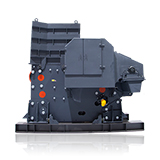How About the Price of Aggregates in Mexico?
Aggregates, which include sand, gravel, and crushed stone, are essential materials in the construction industry. They serve as the backbone for infrastructure development, influencing the cost and quality of construction projects. The aggregates industry in Mexico represents a critical component of the nation's construction and infrastructure sectors, with annual production exceeding 400 million metric tons. Aggregate pricing in Mexico exhibits complex dynamics influenced by geological availability, transportation infrastructure, regulatory frameworks, and economic conditions.
This article provides a comprehensive analysis of the factors affecting aggregate prices in Mexico, the current market trends, and future projections.

1. Current Price Structures and Regional Variations
1.1 National Price Overview
As of 2024, aggregate prices in Mexico range from MXN 150 to MXN 600 per metric ton at the production site, with significant variations based on material type, quality specifications, and regional market conditions. Processed aggregates meeting specific engineering specifications typically command premiums of 30-80% over basic crushed materials, reflecting the additional processing costs and quality assurance requirements.
1.2 Regional Price Analysis
- Northern States (Baja California, Sonora, Chihuahua): Prices range MXN 180-250/ton for standard aggregates, influenced by proximity to US markets and cross-border trade dynamics. The region's arid climate and geological formations typically yield high-quality materials with low moisture content, reducing processing costs but increasing water management expenses.
- Central Region (Mexico City, Estado de México, Querétaro): The nation's highest prices at MXN 250-600/ton, driven by intense urban demand, stringent environmental regulations, and transportation constraints. Mexico City's geographical situation necessitates longer haulage distances from quarries, adding 25-40% to material costs compared to production sites.
- Southern States (Oaxaca, Chiapas, Yucatán): Lower price ranges of MXN 150-220/ton reflect reduced demand intensity but higher relative transportation costs due to infrastructure limitations. Limited geological resources in some areas necessitate longer supply chains, creating paradoxical situations where resource-rich but isolated areas maintain moderate pricing.
- Coastal Regions: Unique pricing structures influenced by maritime transportation options, with port-adjacent areas benefiting from imported aggregates while remote coastal communities face premium pricing due to limited local production.
2. Key Factors Influencing Aggregate Pricing
2.1 Production Costs
- Energy Expenses: Diesel and electricity costs account for 35-45% of production expenses, with regional energy price variations creating significant cost differentials. Operations in states with industrial electricity rates benefit from 15-20% lower processing costs compared to regions relying on commercial power rates.
- Labor Costs: Varying significantly by region, from MXN 250-400/day in northern states to MXN 180-300/day in southern regions, representing 20-30% of operational expenses for manual operations.
- Regulatory Compliance: Formal operations incur costs for environmental permits, community relations, and safety compliance totaling 15-25% of production costs, creating price advantages for informal operators of 20-40% on equivalent materials.
2.2 Transportation and Logistics
The most significant variable in aggregate pricing, transportation typically represents 40-60% of delivered costs for distances exceeding 50 kilometers. Truck transportation rates range from MXN 8-15/ton-kilometer depending on route characteristics, load factors, and fuel prices. Major infrastructure projects often implement dedicated logistics operations to reduce transportation costs by 20-30% through backhaul optimization and dedicated fleet management.
2.3 Market Dynamics and Competition
- Construction Activity Cycles: The Mexican construction sector's growth rate of 3-5% annually drives demand fluctuations, with public infrastructure investment creating regional hotspots of demand and price inflation. The current administration's focus on southeastern development has increased price pressures in traditionally low-cost regions.
- International Influence: Proximity to the US border creates export opportunities that stabilize prices in northern states but may create shortages during US construction booms. Cross-border price differentials of 15-30% typically make export economically viable despite transportation costs.
- Industry Consolidation: Increasing involvement of international construction materials companies has introduced more standardized pricing models but reduced price flexibility in formal markets.

3. Price Structures by Material Type
3.1 Basic Aggregates
- Crushed Limestone: The most common aggregate, priced at MXN 150-300/ton depending on grading and quality. Carbonate content and absorption characteristics create quality-based price variations of 15-25%.
- Volcanic Materials: Regionally abundant in central Mexico, priced at MXN 200-350/ton for structural fill applications. Superior engineering properties command premiums of 20-40% over limestone in specific applications.
- River Aggregates: Naturally rounded materials priced at MXN 180-320/ton, with environmental restrictions on extraction creating supply constraints and price premiums in many regions.
3.2 Processed and Specialty Aggregates
- Concrete Aggregates: Quality-controlled materials meeting NMX standards priced at MXN 250-450/ton, with additional costs for specific properties like low reactivity or controlled shape characteristics.
- Asphalt Aggregates: Premium-priced at MXN 280-500/ton due to strict grading requirements and quality controls, with polymer-modified aggregates commanding additional premiums of 25-40%.
- Railway Ballast: Specialized materials priced at MXN 300-550/ton, requiring specific mechanical properties and rigorous quality assurance processes.
- Decorative Aggregates: Highest-value materials at MXN 400-800/ton for architectural applications, with imported materials reaching MXN 1,200/ton for specialty products.
4. Regulatory and Environmental Impact on Pricing
4.1 Environmental Compliance Costs
Formal operations incur significant costs for environmental impact assessments, water management systems, and dust control measures, adding MXN 30-60/ton to production costs. Carbon emissions regulations and potential carbon pricing mechanisms may increase costs by 5-15% in the medium term.
4.2 Land Use and Resource Access
Increasing restrictions on quarry development near urban areas have pushed production sites farther from consumption centers, adding 15-30% to transportation costs. Community relations and social license requirements create additional costs of MXN 15-40/ton for operations near populated areas.
4.3 Quality Standards and Certification
Compliance with NMX-C-111-ONNCCE standards adds MXN 20-50/ton in testing and quality control costs but enables participation in formal construction markets with 20-40% price premiums.
5. Future Price Trends and Market Development
5.1 Short-term Outlook (2024-2025)
Prices are expected to increase by 8-12% annually due to infrastructure development priorities, particularly the Tren Maya and Dos Bocas refinery projects. Transportation cost inflation driven by fuel price increases may add 5-8% to delivered prices.
5.2 Medium-term Developments (2026-2030)
Industry consolidation and increased foreign investment will likely standardize pricing structures but reduce price flexibility. Technological adoption in production and logistics may offset some cost pressures, while environmental regulations will continue adding compliance costs.
5.3 Strategic Implications for Market Participants
- Producers: Investments in processing technology and logistics optimization will be crucial for maintaining competitiveness. Developing value-added products and specialty aggregates offers opportunities for margin improvement.
- Consumers: Strategic sourcing relationships and long-term supply agreements will become increasingly important for cost management. Understanding regional price differentials and transportation economics enables significant cost savings.
- Investors: The market's fragmentation presents consolidation opportunities, while infrastructure development creates demand growth exceeding GDP expansion in several regions.
The aggregate market in Mexico is shaped by a complex interplay of factors, including supply and demand dynamics, transportation costs, regulatory influences, and technological advancements. As the country continues to urbanize and invest in infrastructure, understanding these factors is crucial for stakeholders in the construction industry. While current trends point to regional price variations and increased demand, future projections suggest potential stabilization through technological innovation and regulatory shifts. For industry participants, staying informed about these developments is key to navigating the evolving landscape of aggregate pricing in Mexico.







